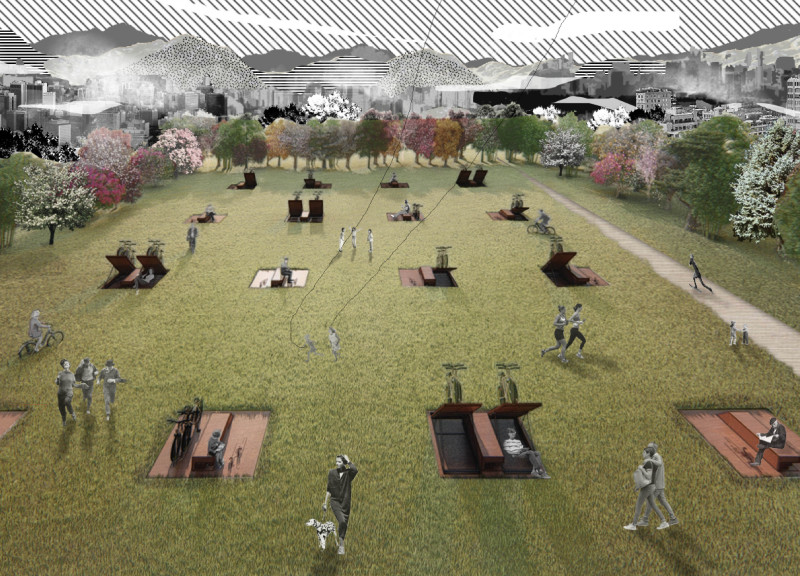5 key facts about this project
The "Sesame" design project focuses on urban furniture that effectively combines multiple functions into one unit. Located in a busy city setting, the structure serves to engage individuals and promote interaction with the environment. Its main features include seating, book storage, and a space for bicycles, all aimed at encouraging users to pause amidst their daily routines. The overarching concept is about discovery, inviting people to explore hidden reading areas within the design.
Functional Versatility
The design of "Sesame" is highly adaptable, allowing for various uses. It features a bench that provides comfortable seating while also offering storage for books. This dual function fosters community by encouraging the sharing of reading materials, making it a useful addition to urban spaces. Additionally, the inclusion of bicycle storage shows a response to the growing need for accommodating cyclists in cities, making it a practical solution for modern mobility.
Engagement with Space
A key aspect of the design is the mechanism that allows users to open panels, revealing sheltered reading areas. This is achieved through hydraulic pistons and hinges that ensure the covers operate smoothly. When the panels are lifted, they create shaded spaces that offer a welcome escape from the hustle and bustle. This layout enhances the experience of being in a busy area, as users can find a moment of peace while engaging with literature.
User-Centric Design
The "Sesame" unit encourages personal engagement while remaining functional for the community. Even when the covers are shut, it acts as urban furniture with easy access to books for anyone nearby. This characteristic reflects a thoughtful approach that considers how public spaces can encourage social interaction and improve urban living by making literature more accessible.
As individuals approach the "Sesame" unit, they become part of a small ritual. The act of opening the covers not only reveals hidden spaces but also strengthens their connection to the surrounding environment, all while enjoying a moment of calm in the shade.





















































